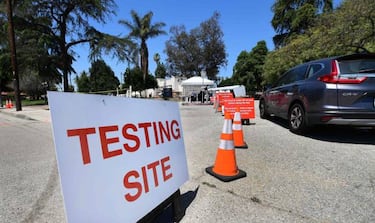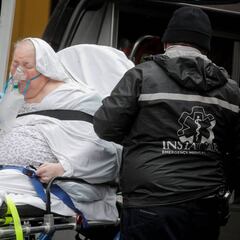Coronavirus: Who can get tested for Covid-19 in the US?
The CDC has outlined four priorities for coronavirus testing in the US, however many experts have called for a revision of the criteria, which has not been updated since March.

The number of coronavirus tests in the US picked up over the past few days. However experts warn that the figures are still a long way off what is necessary to combat the Covid-19 pandemic.
Up to Tuesday, the average daily number of tests carried out in April stood at around 156,000, according to data from the Covid-19 Tracking Project. Since Wednesday, daily testing figures have increased significantly, with 300,833 tests carried out on Saturday, up from 223,552 on Friday, and 191,055 on Thursday, while Wednesday saw the highest number of daily tests with 313,608. At Saturday’s close, a total 5,185,365 tests had been carried out in the US.
While the increase in daily testing is indeed welcomed, some experts say the US should be completing at least 500,000 tests a day, while others have called for up to several million a day.
“We need to significantly ramp up not only the number of tests, but the capacity to perform them,” Anthony Fauci, the head of the National Institute of Allergy and Infectious Diseases, told Time magazine. “I am not overly confident right now at all that we have what it takes to do that.”
The low daily testing figures are due to two main factors: shortages in testing kit supplies and the strict rules on who currently qualifies for testing. As such, experts have called for an easing of the testing criteria, which hasn’t been revised since March.
Follow our live coverage of US coronavirus news and reaction as it breaks.

Who can get tested for Covid 19 in the US?
As it stands, the Center for Disease Control and Protection has outlined four priorities for medical professionals to determine who should be tested, with hospitalized patients and symptomatic healthcare workers top of the priority list and individuals without symptoms considered a “non-priority”.
Nevertheless, the CDC has also urged that clinicians “use their judgment to determine if a patient has signs and symptoms compatible with COVID-19 and whether the patient should be tested.”
“Other considerations that may guide testing are epidemiologic factors such as the occurrence of local community transmission of COVID-19 infections in a jurisdiction. Clinicians are strongly encouraged to test for other causes of respiratory illness,” it says.
CDC’s Four Priorities for coronavirus testing in the US
Priority 1
Ensure optimal care options for all hospitalized patients, lessen the risk of nosocomial infections, and maintain the integrity of the healthcare system
- Hospitalized patients
- Symptomatic healthcare workers
Priority 2
Ensure that those who are at highest risk of complication of infection are rapidly identified and appropriately triaged
- Patients in long-term care facilities with symptoms
- Patients 65 years of age and older with symptoms
- Patients with underlying conditions with symptoms
- First responders with symptoms
Priority 3
Related stories
As resources allow, test individuals in the surrounding community of rapidly increasing hospital cases to decrease community spread, and ensure health of essential workers
- Critical infrastructure workers with symptoms
- Individuals who do not meet any of the above categories with symptoms
- Health care workers and first responders
- Individuals with mild symptoms in communities experiencing high COVID-19 hospitalizations
Non-Priority
Individuals without symptoms

